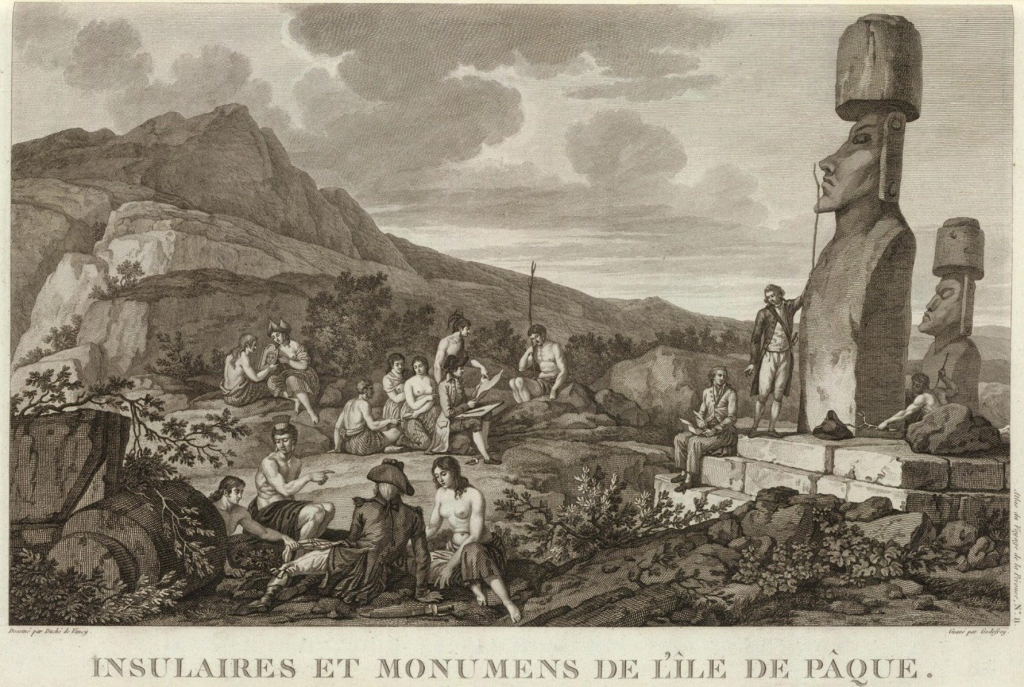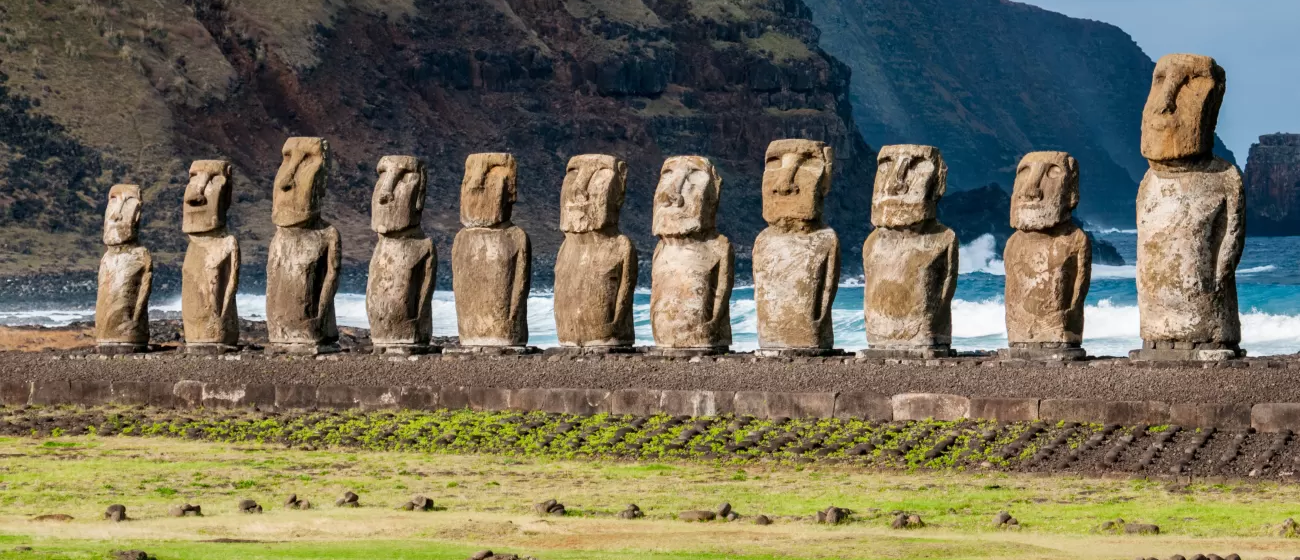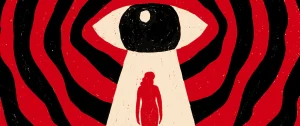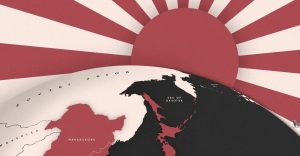Carved by the indigenous Rapa Nui people nearly a millennia ago, the monolithic ‘Moai’ statues of Easter Island have risen to fame as an eccentric icon of modern culture. These vast, imposing structures made of volcanic ash can still be seen scattered throughout the island even to this day, where they have become a popular tourist attraction for visitors from all over the world. Despite their global influence, we actually know relatively little about the origins of these bizarre structures and the dramatic downfall of their creators.
The fall of the Rapa Nui people, whose population collapsed from a peak of around 10,000 to just a few hundred in the span of less than a century, remains a mystery. A wide variety of factors invariably contributed to the ultimate demise of the indigenous tribes on the island, including resource depletion, intertribal conflict, social hierarchy, and European contact. This is the fall of Easter Island.
Resource Depletion
The complete depletion of Easter Island’s natural resources was undoubtedly the most important factor in the downfall of the Rapa Nui. Prior to the 15th century, the island played a key role in sustaining the diverse Polynesian ecosystem, and was home to around 30 species of birds along with countless more plants. It was the collapse of this delicate natural balance that resulted in the Rapa Nui’s demise. When Dutch explorer Admiral Jacob Roggeveen first arrived on the island in 1722, he noted that the Rapa Nui were “destitute of heavy or thick timber, and also of stout cordage, out of which to construct gear”, and was baffled by how they had managed to carve and transport statues of “a good 30 feet in height and broad proportion” on an island that seemed to have so few natural resources.
Deforestation
The truth, as it turned out, was that Easter Island was once home to vast plantations of palm trees, which the Rapa Nui people had almost completely cleared before Europeans first arrived. According to geographer Jared Diamond, the Rapa Nui frequently engaged in an agricultural practice known as ‘slash and burn’, in which they cut down and burned huge swathes of palm trees. The goal of this ‘mass deforestation’ practice was to create additional space for agriculture and source wood to construct fishing boats and huts, while also clearing paths and shaping tools to transport the Moai. The absence of palm trees on Easter Island meant that there was no longer a foundation to anchor the island’s soil, which resulted in soil infertility and caused crop yields to fall dramatically.

Additionally, it also meant that there was no longer enough wood to construct fishing boats, which further restricted food supply. Evidence also suggests that there was an infestation of rats on the island at the time, which likely stowed away on Polynesian ships when the Rapa Nui first arrived on the island. It was the sheer recklessness of the Rapa Nui people in managing the ecosystem of Easter Island that ultimately contributed to civilisational collapse.
Overpopulation
We can also look to starvation and overpopulation as another factor in the fall of Easter Island. With a huge decline in annual crop yields due to mass deforestation, famine ensued across the island. Widespread malnutrition resulted in a compromised immune system, creating the ideal circumstances for disease to spread throughout the island. The overpopulation of the indigenous tribes only exacerbated the hunger and famine, and led to various new religious factions emerging among the islanders as they searched for a god who would alleviate their struggles. The largest of these groups was the Tangata manu, more commonly referred to as the ‘Birdman Cult’, who worshipped a half-bird, half-human deity referred as Make-make, proclaiming it the creator of humanity and God of fertility.
Growing tensions and opposing beliefs between different religious factions resulted in conflict, in which“2% of fatalities have been attributed by bio-anthropologists to violence”, according to Dr Mara Mulrooney. Although this number may seem insignificant, one in fifty islanders dying as a result of intertribal violence serves as a testament to the rapidly deteriorating conditions on Easter Island. Before long, the society of the Rapa Nui devolved into utter chaos, with different tribes attempting to burn one another’s crops and villages as the island plummeted into a downward spiral of warfare, arson, and cannibalism.
Food Distribution and European Arrival
The unequal distribution of food among tribe members was also a factor in civilisational collapse. According to Dr Nicolas Cauwe, “village elders were granted divine status”, with the tribe diverting food and resources almost entirely to the elderly. This system was particularly detrimental, and caused the population of younger generations to diminish year by year. After Roggeveen arrived on the island on 5 April (Easter Sunday), 1722, Europeans sent around half of the population to Peru to serve as slaves, and almost 90% of the Rapa Nui ending up dying as a result of poor conditions and severe overwork. Subsequent Dutch and English explorers introduced diseases such as syphilis and smallpox to the islanders, which caused thousands to die in the following years.

European Diseases and Slavery
Although much of the conjecture surrounding the demise of the Rapa Nui people was once perceived as a certainty, new historical analysis has begun to challenge these long-held beliefs. In fact, no concrete evidence exists to prove that a widespread civilisational collapse occurred on Easter Island prior to European arrival, a claim that Diamond popularised. As a result, various alternate explanations have emerged as to what exactly caused the Rapa Nui’s demise. Archaeologists Carl Lipo and Terry Hunt proposed the most prominent theory, in which they suggest that the fall of the Rapa Nui was primarily the result of European-introduced disease and mass slavery rather than deforestation, starvation and conflict.
Lipo and Hunt believe that the inhabitants of Easter Island still had the potential to thrive even after the clearing of palm trees, by cultivating hardier crops such as sweet potatoes and carrots. They further propose that the Rapa Nui continued to create and transport Moai even after European contact and that there were enough resources to do so, contrary to the observations of Roggeveen. Lipo also popularised the theory that the Rapa Nui ‘walked’ the Moai across the island with a system of alternating ropes, which he demonstrated with a 5-ton replica in 2012. Historians have since proven that the obsidian mata’a, once believed to be weapons of warfare, were multi-purpose tools, which the Rapa Nui scattered across the island in various locations, shapes and sizes for carrying out various tasks such as drawing tattoos or harvesting crops.
Anthropologist Robert DiNapoli supports Lipo’s claims, and has used Bayesian inference and various dating techniques to prove that the Rapa Nui created many of the Moai’s construction platforms during or after first European contact. Historian Christopher Stevenson has gone so far as to propose that the decline of the Rapa Nui was mostly an outcome of changing weather patterns. Diamond’s initial hypothesis, however, still remains the most popular today, and is largely based on the findings of Norwegian researcher Thor Heyerdahl and archaeologist Jo Anne Van Tilburg.
Conclusion
Regardless of whether deforestation, starvation, conflict, colonisation, or a combination of these factors ultimately led to the fall of Easter Island, the Rapa Nui have undoubtedly captured the imaginations of millions across the world with the creation of the eccentric and iconic Moai statues. For centuries, these indigenous people inhabited the island which culminated in a thriving population of over 10,000, one which would fail to stand the test of time. Easter Island invariably grants scientists and historians today a valuable insight into the state of climate change in our modern world, representing a civilisation and ecosystem which collapsed from the ignorance and mismanagement of its environment.
Read more: The Insight Corner



